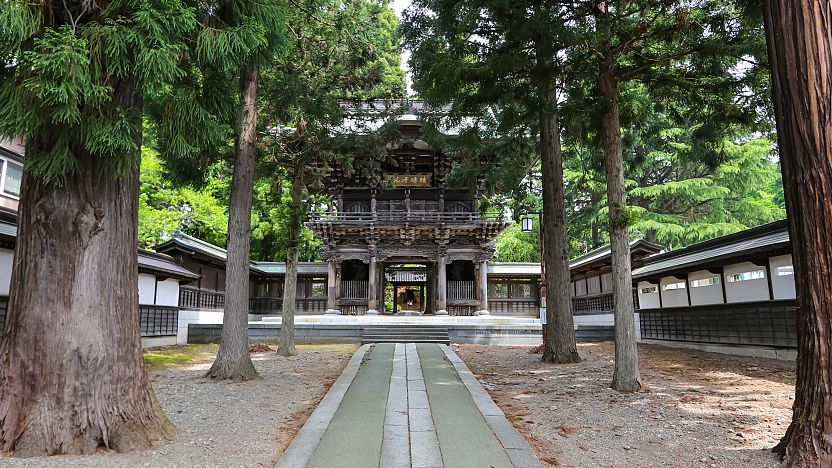
Hoonji (Ģ±ēČÄø, Hōonji) is a Soto Zen Buddhist temple 15 minutes on foot north of downtown Morioka. The main road leading to Hoonji Temple is flanked by temples and shrines, and is selected as one of Japan's top 100 picturesque streets.
Established in 1394, Hoonji Temple was moved to its current location in 1601, but many of the temple buildings date back only to the mid 20th century. The temple is best known for its statues of Buddhist disciples or rakan, which were carved over a period of four years (1731-1734) by nine artisans from Kyoto. Originally, there were 500 statues, but only 499 remain.

The first structure visitors encounter at Hoonji Temple is the wooden Sanmon Gate. From there, visitors continue past the belfry on the right and straight to the main hall, which houses a statue of Shaka Nyorai, the historical Buddha, as its principal object of worship. Inside the main hall, a corridor on the left leads to the Rakando Hall, which contains the above-mentioned 499 rakan statues and is the oldest building on the temple grounds, dating back to 1858.
In the center of the hall stands a statue of the seated Vairocana Buddha, surrounded by the ten great disciples of Buddha. Placed along the walls surrounding the stage are the many rakan statues. Among them are some, which over the years, have been said to resemble historical figures like Marco Polo and the grandchild of Genghis Khan.

Getting there and around
Hoonji Temple is a 15 minute walk north of downtown Morioka or about 40 minutes on foot from Morioka Station. Alternatively, take the Dendenmushi Loop Bus and get off at Honchodori-itchome (120 yen one way, 10 minutes from Morioka Station, every 20 minutes), from where the temple is a ten minute walk.
The temple is also a ten minute walk from Kami-Morioka Station on the JR Yamada Line (5 minutes, 150 yen one way from Morioka Station), but trains operate only every 2-4 hours.
How to get to and around Morioka

Hours and Fees
Rakando Hall
Hours
Closed
Admission
Questions? Ask in our forum.


